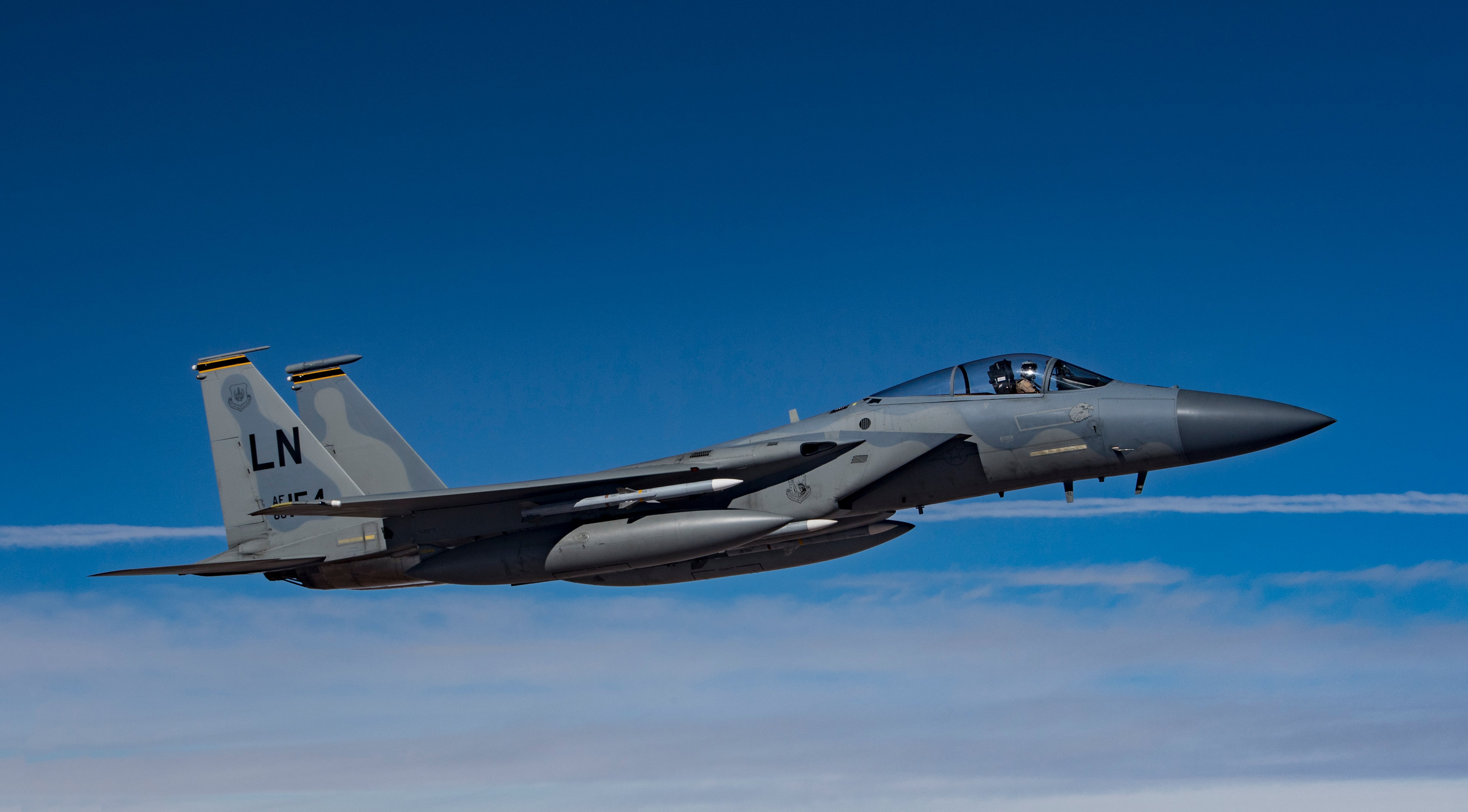WASHINGTON — The Air Force has officially placed an order for its first batch of F-15EXs, awarding Boeing a contract on Monday that puts a ceiling value for the entire program close to $23 billion.
The first delivery order, which has a not-to-exceed value of about $1.2 billion, covers the first lot of eight F-15EX fighter jets, as well as support and one-time, upfront engineering costs.
The contract award is a massive win for Boeing and gives a second life for the F-15 production line in St. Louis, Mo. After years of urging the Air Force to consider an advanced version of the F-15 as a complementary capability to Lockheed Martin’s F-35, Boeing found an ally in the Defense Department’s Cost Assessment and Program Evaluation office, which in 2019 forced the service to purchase F-15EX planes in order to build capacity.
RELATED

Although Air Force leaders at the time said that the service would have preferred funds to buy additional fifth generation planes like the F-35, officials now say that buying new F-15s is the quickest path for replacing aging Air National Guard F-15C/Ds that are reaching the end of their service lives.
“The F-15EX is the most affordable and immediate way to refresh the capacity and update the capabilities provided by our aging F-15C/D fleets,” Gen. Mike Holmes, Air Combat Command commander, said in a statement. “The F-15EX is ready to fight as soon as it comes off the line.”
The first two F-15EX aircraft are already being manufactured and will roll off the production line early next year, the company said in a news release. They will initially be based at Eglin Air Force Base, Fla., for testing, with the remaining six aircraft set to be delivered to the base in fiscal year 2023, the Air Force said.
The contract includes options for up to 200 jets, with the Air Force projecting it will buy at least 144 F-15EX aircraft, said Air Force spokesman Capt. Jacob Bailey. Each jet is projected to have a unit flyaway cost of $87.7 million.
“The first two aircraft were awarded [Monday]; the remaining six are included as priced options,” Bailey said. “The aircraft, support equipment, initial spares, and most [nonrecurring engineering] tasks will be purchased under a fixed-priced contract types. Software integration, test support, and interim contractor support will be purchased under cost-plus contract types.”
Along with the first eight F-15EXs, which were approved in the fiscal year 2020 budget, the Air Force has requested 12 F-15EXs in FY21 and plans to ask for 64 jets from FY22 to FY25.
The Air Force has not decided which bases will be the first to receive F-15EX jets, with the service adding in its news release that “the Strategic Basing Process is in work to determine the fielding locations for subsequent aircraft lots.”
The F-15EX will be a two-seat jet with fly-by-wire controls, the new Eagle Passive Active Warning Survivability System electronic warfare system, an advanced cockpit, and new mission systems. But according to the Air Force, the most significant upgrade comes in the form of an open mission systems architecture that will allow the service to more rapidly update the F-15′s software.
Another major advantage of purchasing additional F-15s is the aircraft’s payload capacity, which will allow it to carry and launch hypersonic missiles at standoff distances.
“The F-15EX is the most advanced version of the F-15 ever built, due in large part to its digital backbone,” said Lori Schneider, Boeing F-15EX program manager. “Its unmatched range, price and best-in-class payload capacity make the F-15EX an attractive choice for the U.S. Air Force.”
Monday’s announcement follows a firm, fixed-price contract worth up to $101 million that was awarded to General Electric in late June for the first lot of F-15EX engines. Under the contract, GE will provide “F110-GE-129 engines, including installs and spares, and modernized engine monitoring system computers,” the department stated.
Edited on 7/15/20 at 9:26 EST with additional details on the contract.
Valerie Insinna is Defense News' air warfare reporter. She previously worked the Navy/congressional beats for Defense Daily, which followed almost three years as a staff writer for National Defense Magazine. Prior to that, she worked as an editorial assistant for the Tokyo Shimbun’s Washington bureau.








